Marcel Proust (1871-1922): Music
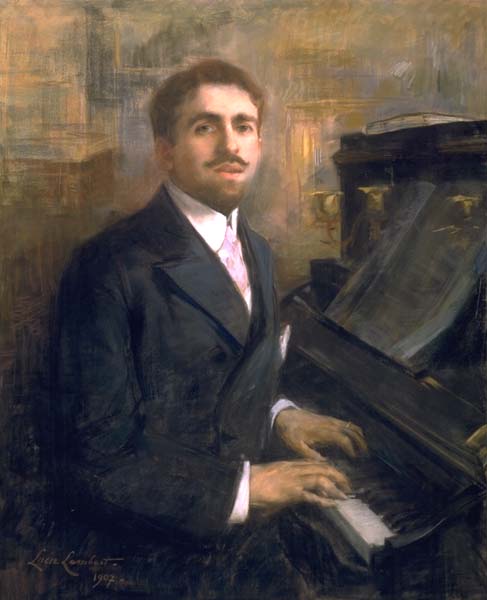
Composers by Last Name: Adam - Beethoven
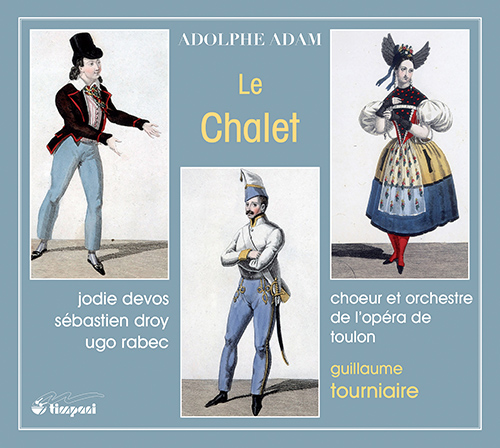
Adam: Le Chalet. Toulon Opera Chorus & Symphony, cond. Tourniaire, 2016
Soloists: Droy, Devos, Rabec, Delobel. Ensemble: Toulon Opera Chorus and Symphony. Conductor: Tourniaire. Recorded on 6-9 September 2016 at the Palais Neptune in Toulon, France. Released 2018. Timpani 1C1242. Complete liner notes to Le Chalet.
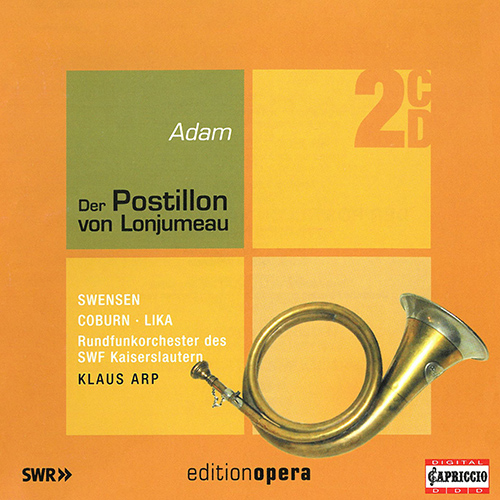
Adam: Le Postillon de Longjumeau. Rundfunk Orchester der SWF Kaiserslautern, cond. Arp, 1994
Soloists: Swenson, Coburn, Lika. Ensemble: Rundfunk Orchester der SWF Kaiserslautern. Conductor: Arp. Released 1994. Capriccio C51180.
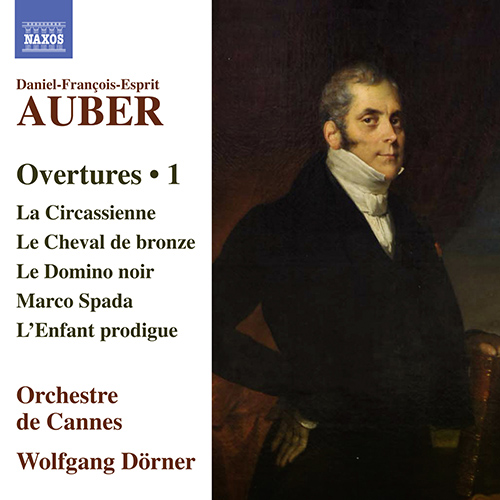
D.-F. Auber: Les diamants de la couronne, S. 34: Overture, Orchestre Régional de Cannes, dir. Dörner, 2016
Orchestre Régional de Cannes, dir. Dörner. Released 2016. Naxos 8.573553. Complete liner notes to Les Diamants.

D.-F. Auber: Le domino noir, S. 30: Overture, Orchestre Régional de Cannes, dir. Dörner, 2016
Orchestre Régional de Cannes, dir. Dörner. Released 2016. Naxos 8.573553. Complete liner notes to Le domino.
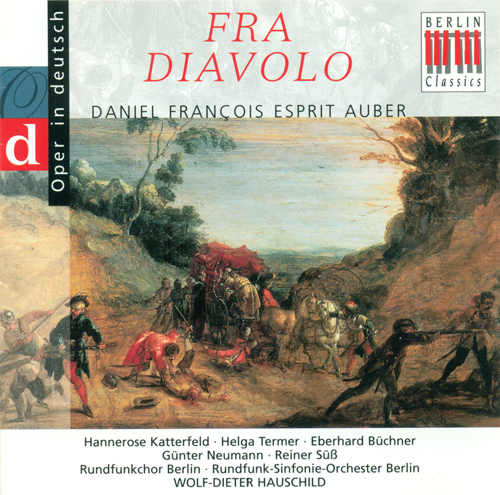
D.-F. Auber: Fra Diavolo (excerpts sung in German), Rundfunkchor Berlin & Rundfunk-Sinfonie-Orchester Berlin, dir. Hauschild, 1975
Soloists: Katterfeld, Termer, Büchner, Neumann, Süß. Ensemble: Rundfunkchor Berlin & Sinfonie-Orchester Berlin. Conductor: Wolf-Dieter Hauschild. Released 1975. Berlin Classics 0021402BC.
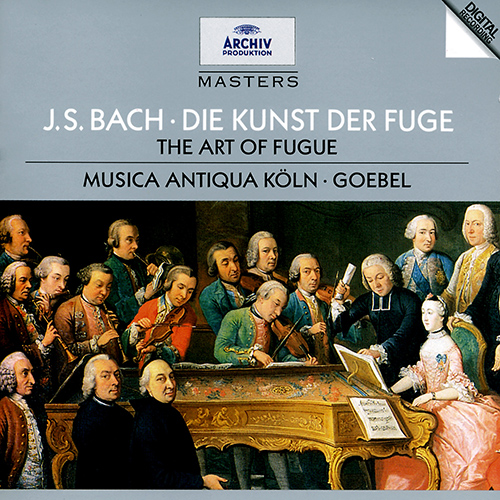
J.S. Bach: Die Kunst der Fuge (The Art of Fugue), BWV 1080 (arr. for chamber ensemble). Cologne Musica Antiqua, cond. Goebel, 2014
Cologne Musica Antiqua. Conductor: Reinhard Goebel. Released 2014. Deutsche Grammophon 00028944729320.
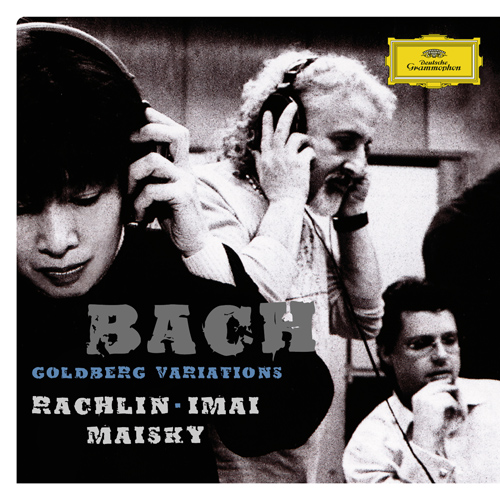
J.S. Bach: Goldberg Variations, BWV 988. Imai, Maisky, & Rachlin, 2007
Arranged for string trio. Nobuko Imai, Mischa Maisky, & Julian Rachlin, string trio. Released 2007. Deutsche Grammophon 00028947763789.
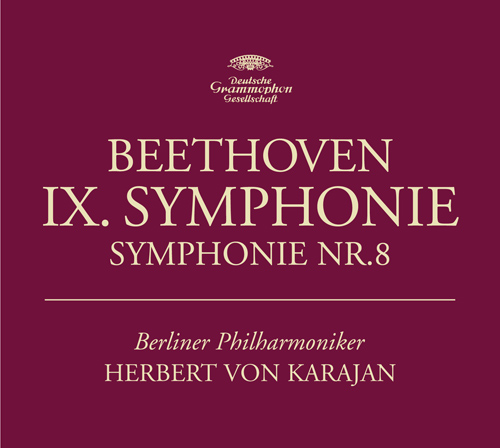
Beethoven: Symphony No. 9. Berlin Philharmonic, cond. von Karajan, 2008
Berlin Philharmonic Orchestra, cond. Herbert von Karajan. Released 2008. Deutsche Grammophon 00028947775683.
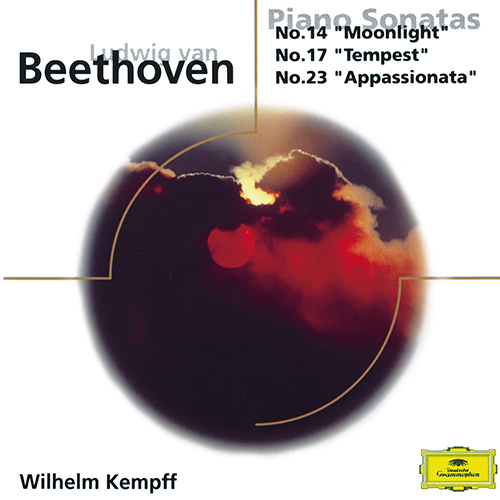
Beethoven: Piano Sonata no. 14 in C-Sharp Minor, Op. 27, no. 2, "Moonlight." Kempff, 2000
Wilhelm Kempff, piano. Released 2000. Deutsche Grammophon 00028946961827.
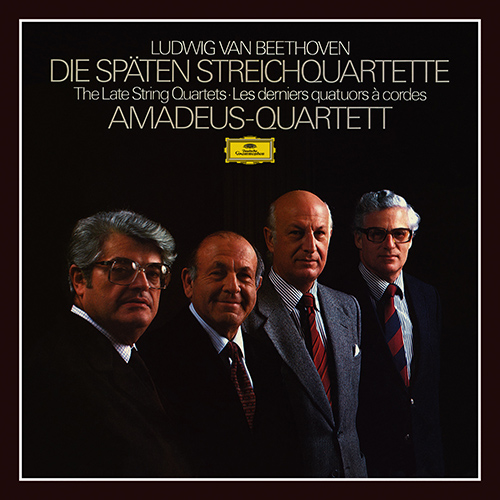
Beethoven: The Late String Quartets (Nos. 12-16 & the "Grosse Fuge"). Amadeus Quartet, 2017
Amadeus Quartet. Released 2017. Deutsche Grammophon 00028947986744.
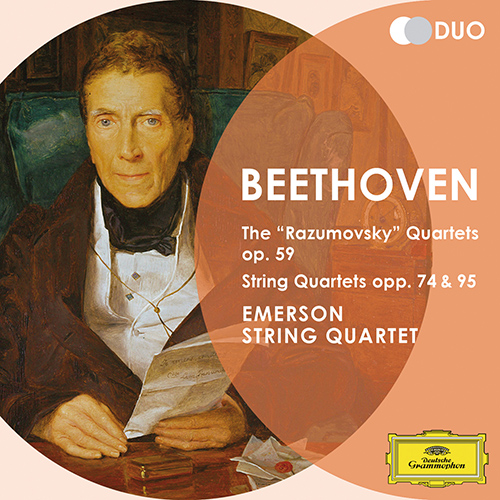
Beethoven: String Quartet No. 7 in F Major, Op. 59, No. 1, "Rasumovsky." Emerson String Quartet, 2013
Emerson String Quartet. Released 2013. Deutsche Grammophon 00028947914327.

Beethoven: String Quartet No. 8 in E Minor, Op. 59, No. 2, "Rasumovsky." Emerson String Quartet, 2013
Emerson String Quartet. Released 2013. Deutsche Grammophon 00028947914327.
Composers by Last Name: Beethoven - Halévy

Beethoven: String Quartet No. 9 in C Major, Op. 59, No. 3, "Rasumovsky." Emerson String Quartet, 2013
Emerson String Quartet. Released 2013. Deutsche Grammophon 00028947914327.
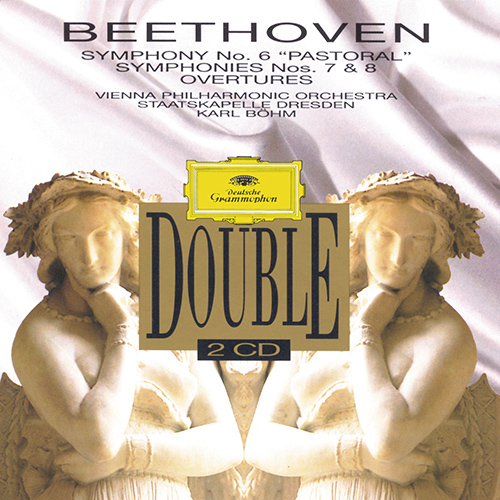
Beethoven: Symphony No. 6 in F Major, Op. 68, "Pastoral." Vienna Philharmonic & Dresden Staatskapelle, cond. Böhm, 2009
Vienna Philharmonic & Dresden Staatskapelle, cond. Karl Böhm. Released 2009. Deutsche Grammophon 00028943792820.

Beethoven: Fidelio. Bavarian State Opera Chorus & Orchestra, dir. Knappertsbusch, 2013.
Soloists: Jurinac, Peerce, Stader. Ensemble: Bavarian State Opera Chorus and Orchestra. Conductor: Hans Knappertsbusch. Released 2013. Deutsche Grammophon 00028948065615.
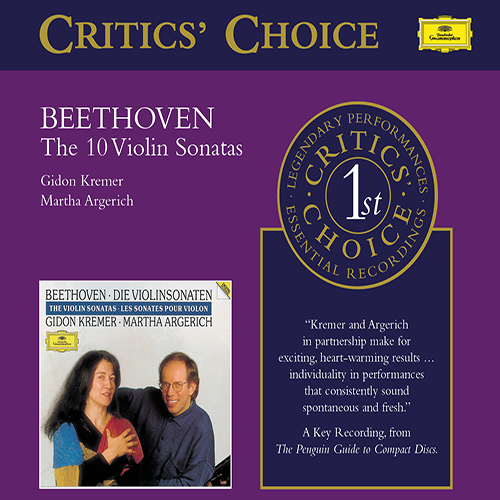
Beethoven: Violin Sonata No. 9 in A Major, Op. 47, "Kreutzer." Kremer & Argerich, 2005
Gidon Kremer, violin. Martha Argerich, piano. Released 2005. Deutsche Grammophon 00028947672562.
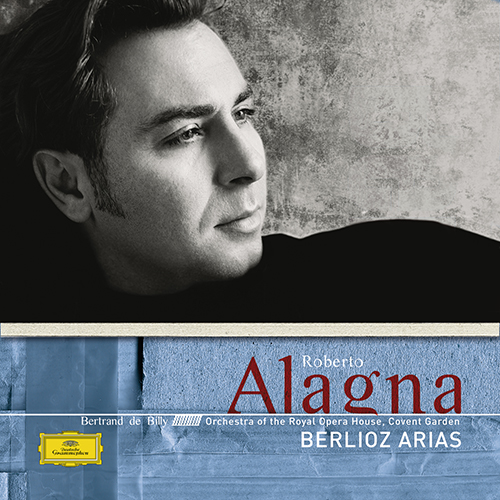
Berlioz: L'enfance du Christ (The Childhood of Christ), Op. 25, Part II, "La fuite en Egypte": Le repos de la Sainte Famille. Alagna, Orchestra of the Royal Opera House, Covent Garden, cond. de Billy, 2006
Roberto Alagna, tenor. Orchestra of the Royal Opera House, Covent Garden, cond. Bertrand de Billy. Released 2006. Deutsche Grammophon 00028947762775.
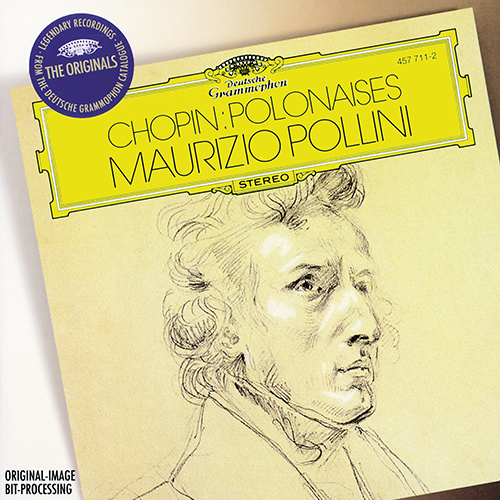
Chopin: 7 Polonaises, Ops. 26, 40, 44, 53, 61. Pollini, 1998
Maurizio Pollini, piano. Released 1998. Deutsche Grammophon 00028945771120.
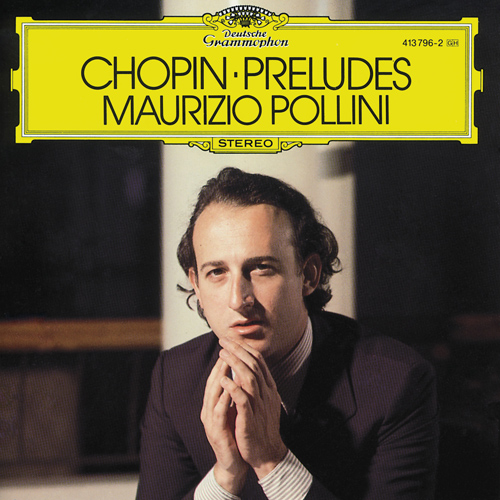
Chopin: 24 Preludes, Op. 28. Pollini, 1985
Maurizio Pollini, piano. Released 1985. Deutsche Grammophon 00028941379627.
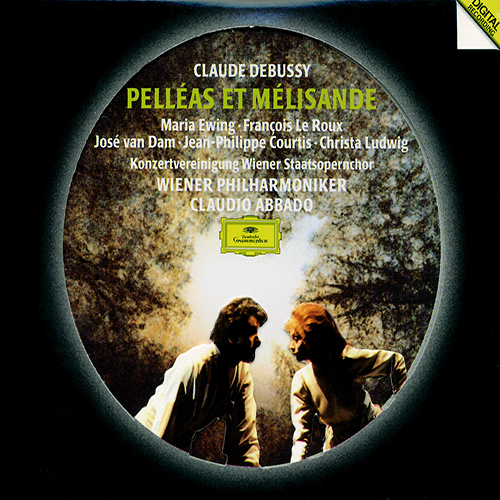
Debussy: Pelléas et Mélisande. Vienna Philharmonic, dir. Abbado, 1992
Soloists: Ewing, Le Roux, van Dam, Courtis, C. Ludwig. Ensemble: Vienna Philharmonic. Conductor: Claudio Abbado. Released 1992. Deutsche Grammophon 00028943534420.
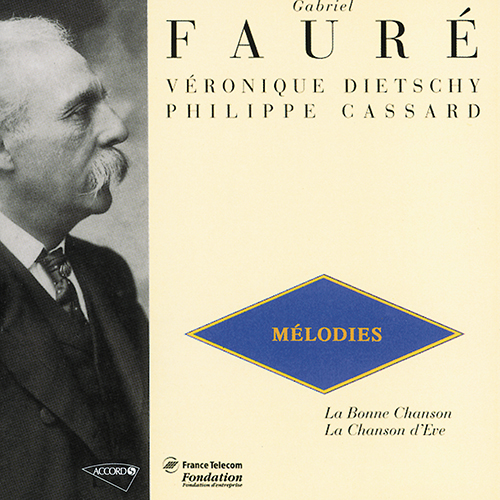
Fauré: Le secret, Op. 23, No. 3. Dietschy, Cassard, 2007
Véronique Dietschy, alto. Philippe Cassard, piano. Released 2007. Universal Classics 00028946548929.
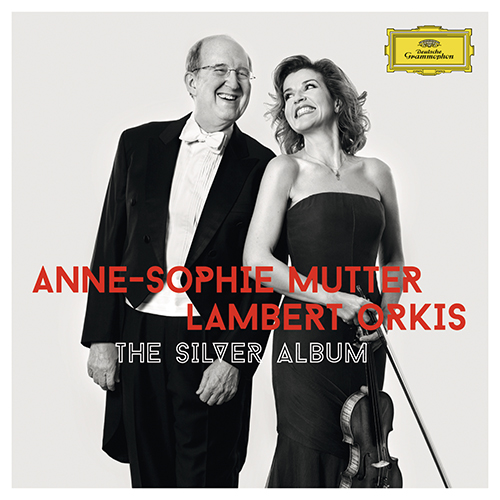
Fauré: Violin Sonata No. 1 in A Major, Op. 13. Mutter, Orkis, 2014
Anne-Sophie Mutter, violin. Lambert Orkis, piano. Released 2014. Deutsche Grammophon 00028947929536.
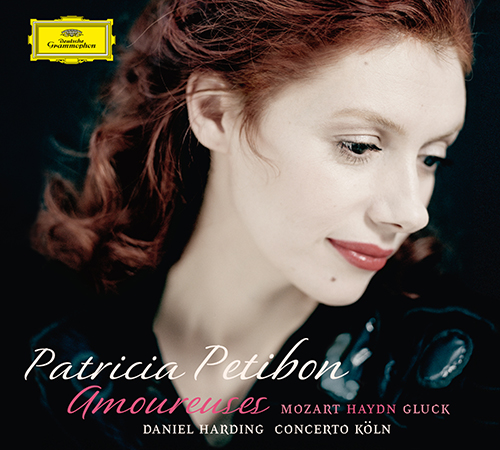
Gluck: Armide, Act III: Venez, secondez mes desirs / Odio, furor, dispetto. Petibon, 2008
Patricia Petibon, soprano. Concerto Köln. Conductor: Daniel Harding. Released 2008. Deutsche Grammophon 00028947779803.
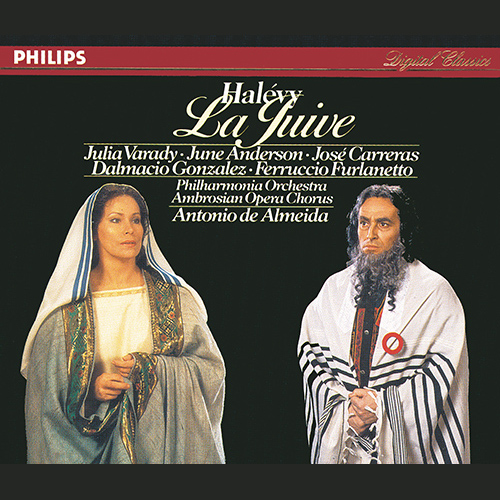
Halévy: La Juive. Ambrosian Opera Chorus & Philharmonia Orchestra, dir. Almeida, 2016
Soloists: Várady, J. Anderson, Carreras, D. Gonzales, Furlanetto. Ensemble: Ambrosian Opera Chorus, Philharmonia Orchestra. Conductor: Antonio de Almeida. Released 2016. Decca 00028942019027.

Composers by Last Name: Liszt - Rimsky-Korsakov
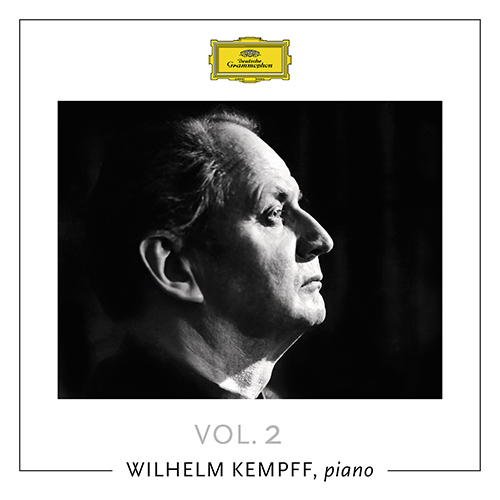
Liszt: 2 Légendes (S175/R17), No. 1: St. François d'Assise - La prédication aux oiseaux (St. Francis of Assisi Preaching to the Birds). Kempff, 2015
Wilhelm Kempff, piano. Released 2015. Deutsche Grammophon 00028947903154.
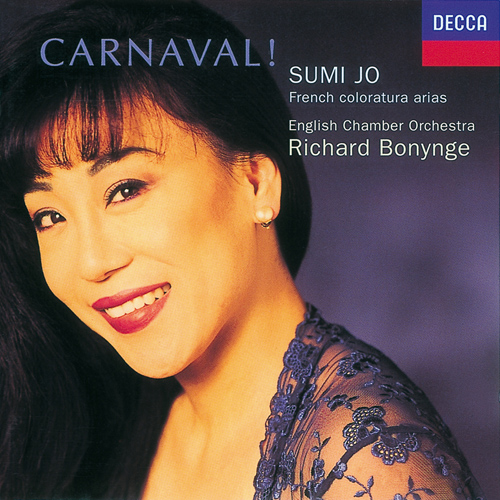
Massé: La reine Topaze: Carnaval de Venise (Venetian Carnival). Sumi Jo, English Chamber Orchestra, dir. Bonynge, 2006
Sumi Jo, soprano. English Chamber Orchestra, cond. Richard Bonynge. Released 2006. Decca 00028944067927.
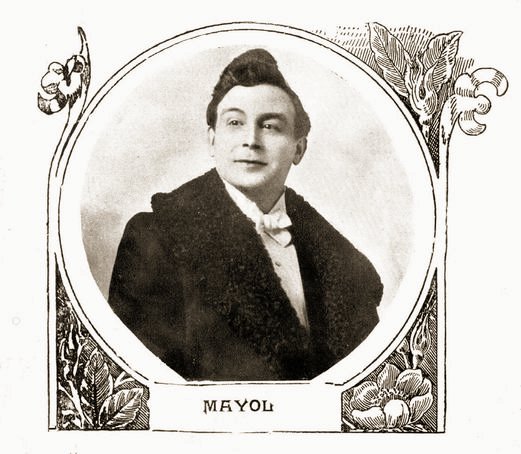
Félix Mayol performs "Viens Poupoule," 1932
See video description for complete lyrics.
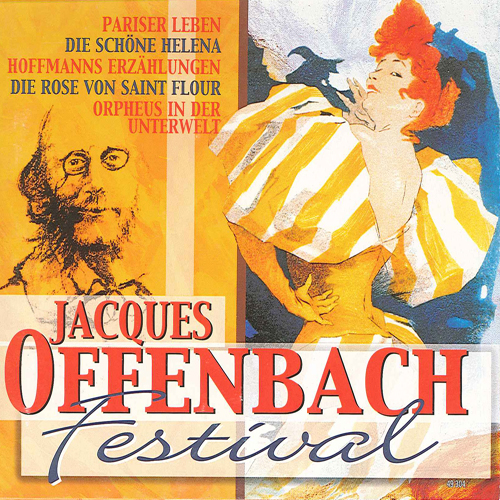
Offenbach: La belle Hélène (excerpts). Cologne West German Radio Chorus & Orchestra, 2001
Soloists: Cremer, Falk, Froschauer, Geese, Rohde, Steinberg, Stulen, Villiers. Ensemble: Cologne West German Radio Chorus & Orchestra. Released 2001. Capriccio C49304.
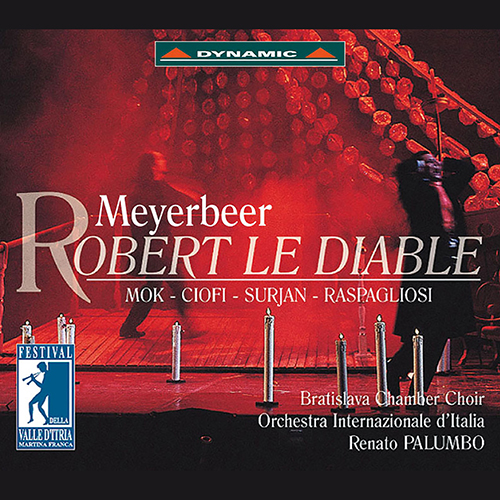
Meyerbeer: Robert le Diable. Bratislava Chamber Choir & International Orchestra of Italy, dir. Palumbo, 2000
Soloists: Mok, Ciofi, Surian, Raspagliosi. Ensemble: Bratislava Chamber Choir, International Orchestra of Italy. Conductor: Renato Palumbo. Released 2000. Dynamic CDS368.
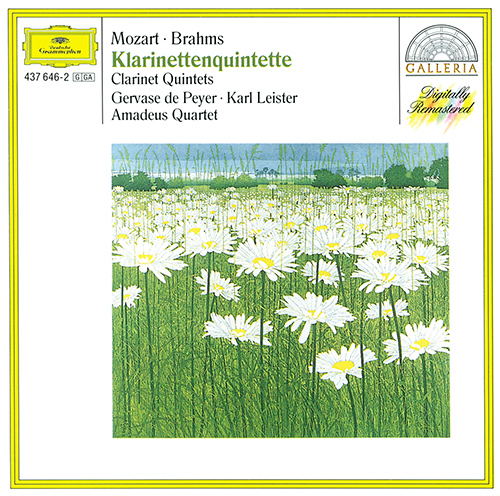
Mozart: Clarinet Quintet in A Major, K. 581. de Peyer, Leister, Amadeus Quartet, 1993
Gervase de Peyer, Karl Leister, Amadeus Quartet. Released 1993. Deutsche Grammophon 00028943764629.
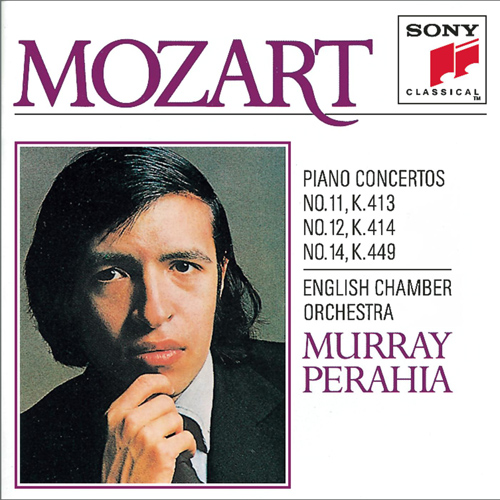
Mozart: Piano Concertos nos. 11, 12, & 14. Murray Perahia, English Chamber Orchestra, 1987
Murray Perahia, piano. English Chamber Orchestra. Released 1987. Sony Classical 074644224320.
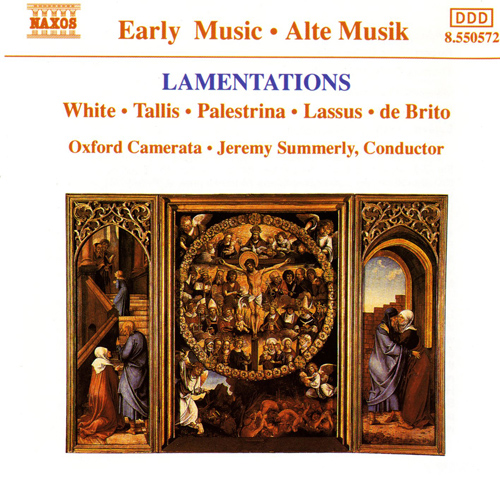
Palestrina: Lesson I for Maundy Thursday. Oxford Camerata, dir. Summerly, 1992
Oxford Camerata. Conductor: Jeremy Summerly. Released 1992. Naxos 8.550572.

Piccinni: Iphigénie en Tauride, Act I, Scene 2. Orchestre Nationale de France, dir. Mazzola, 2007
See video description for recording information.
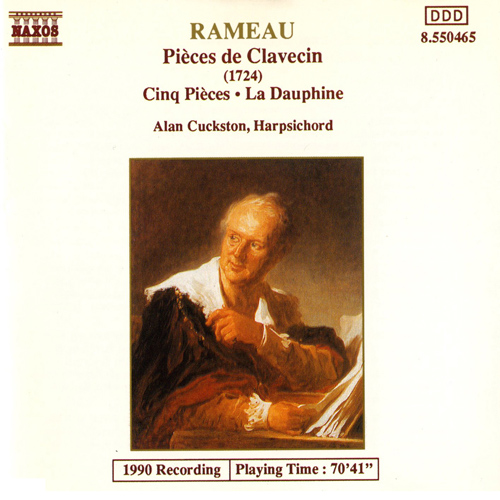
Rameau: Pièces de Clavecin / Cinq Pièces. Cuckston, 1990
Alan Cuckston, piano. Released 1991. Naxos 8.550465.
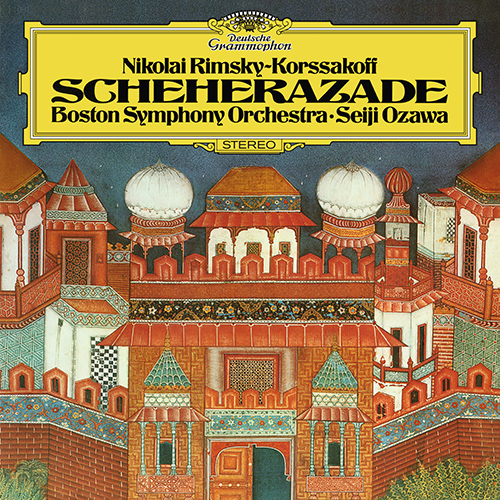
Rimsky-Korsakov: Scheherazade. Boston Symphony Orchestra, dir. Ozawa, 2017
Boston Symphony Orchestra. Conductor: Seiji Ozawa. Released 2017. Deutsche Grammophon 00028947986935.
Composers by Last Name: Schumann - Wagner
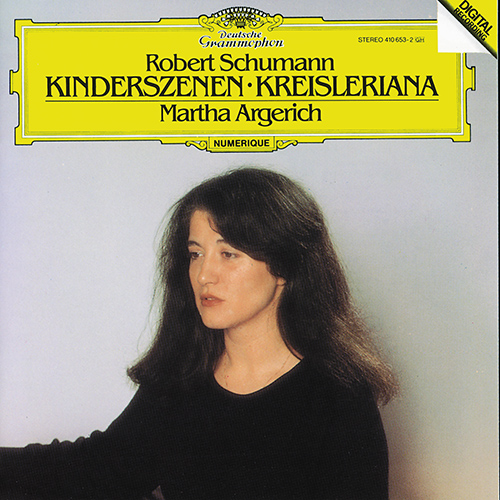
Schumann: Kinderszenen (Scenes of Childhood), Op. 15. Argerich, 1984
Martha Argerich, piano. Released 1984. Deutsche Grammophon 00028941065322.
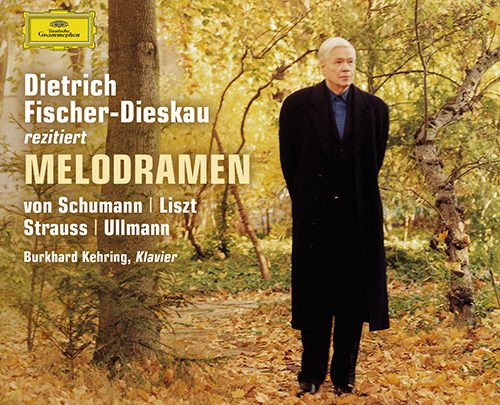
Schumann: 2 Balladen, Op. 122. Fischer-Dieskau, 2005
Dietrich Fischer-Dieskau, baritone. Burkhard Kehring, piano. Released 2005. Deutsche Grammophon 00028947753209.
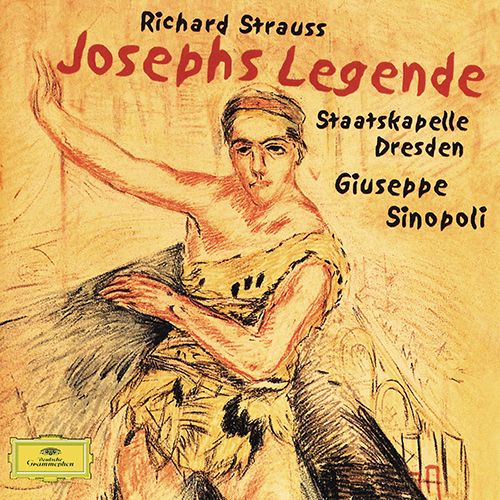
Strauss: Josephslegende, Op. 63, TrV 231. Dresden Staatskapelle, dir. Sinopoli, 2005
Dresden Staatskapelle. Conductor: Giuseppe Sinopoli. Released 2005. Deutsche Grammophon 00028946349328.
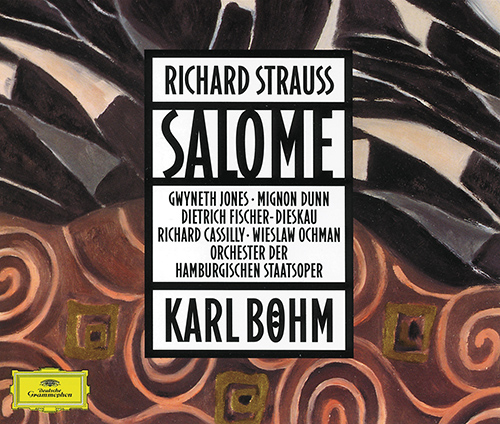
Strauss: Salomé, Op. 54, TrV 215. Hamburg State Opera Orchestra, dir. Böhm, 1994
Soloists: Jones, Dunn, Fischer-Dieskau, Cassilly, Ochman. Ensemble: Hamburg State Opera Orchestra. Conductor: Karl Böhm. Released 1994. Deutsche Grammophon 00028944531923.
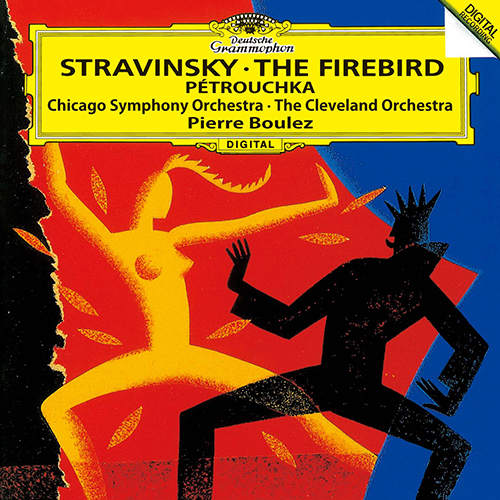
Stravinsky: The Firebird and Petrushka. Chicago Symphony Orchestra & Cleveland Orchestra, dir. Boulez, 2016
Chicago Symphony Orchestra & Cleveland Orchestra. Conductor: Pierre Boulez. Released 2016. Deutsche Grammophon 00028948271221.
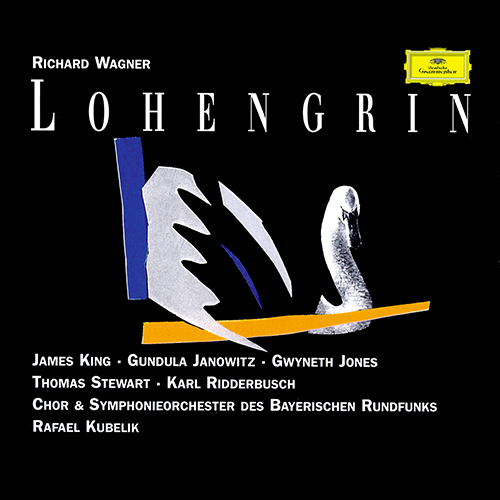
Wagner: Lohengrin. Chor und Symphonieorchester des Bayerischen Rundfunks, dir. Kubelík, 1996
Soloists: King, Janowitz, Jones, Stewart, Ridderbusch. Ensemble: Chor und Symphonieorchester des Bayerischen Rundfunks (Bavarian Radio Chorus and Symphony). Conductor: Kubelík. Recorded 1996. Deutsche Grammophon 00028944959123.
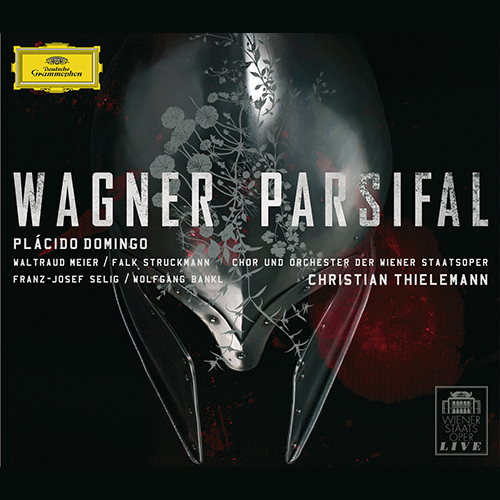
Wagner: Parsifal. Vienna State Opera Chorus & Orchestra, dir. Thielemann, 2006
Soloists: Domingo, Meier, Struckmann, Selig, Bankl. Ensemble: Vienna State Opera Chorus and Orchestra. Conductor: Christian Thielemann. Released 2006. Deutsche Grammophon 00028947760061.
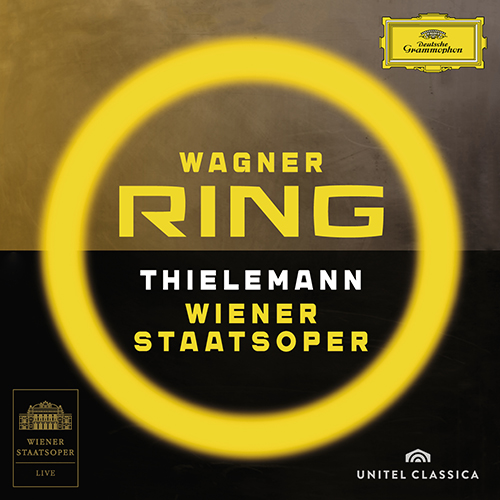
Wagner: Der Ring des Nibelungen (The Ring of the Nibelung). Vienna State Opera Orchestra, dir. Thielemann, 2014
Soloists: Tonca, Reinprecht, Baechle, Schmidt, Eröd. Ensemble: Vienna State Opera Orchestra. Conductor: Christian Thielemann. Released 2014. Deutsche Grammophon 00028947940760.
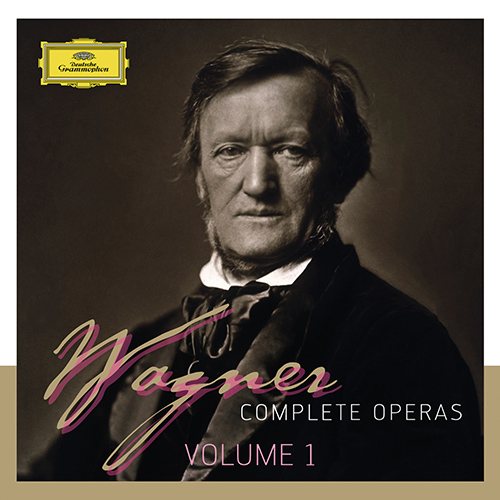
Wagner: Tannhäuser. Chorus of the Royal Opera House, Covent Garden & Philharmonia Orchestra, dir. Sinopoli, 2012
Soloists: Salminen, Domingo, Schmidt, Pell, Rydl, Bieber, Hillebrandt, Studer, Baltsa, Bonney. Ensemble: Chorus of the Royal Opera House, Covent Garden, and Philharmonia Orchestra. Conductor: Giuseppe Sinopoli. Released 2012. Deutsche Grammophon 00028947909224. Complete liner notes to Tannhäuser.
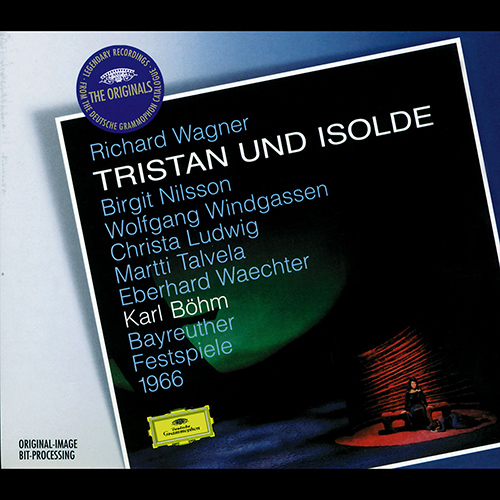
Wagner: Tristan und Isolde. Bayreuth Festival Orchestra, dir. Böhm, 1998
Soloists: Nilsson, Windgassen, Ludwig, Talvela, Waechter. Ensemble: Bayreuth Festival Orchestra. Conductor: Karl Böhm. Released 1998. Deutsche Grammophon 00028944977226.

Music Databases

NAXOS Music Library

OntheBoards.tv

